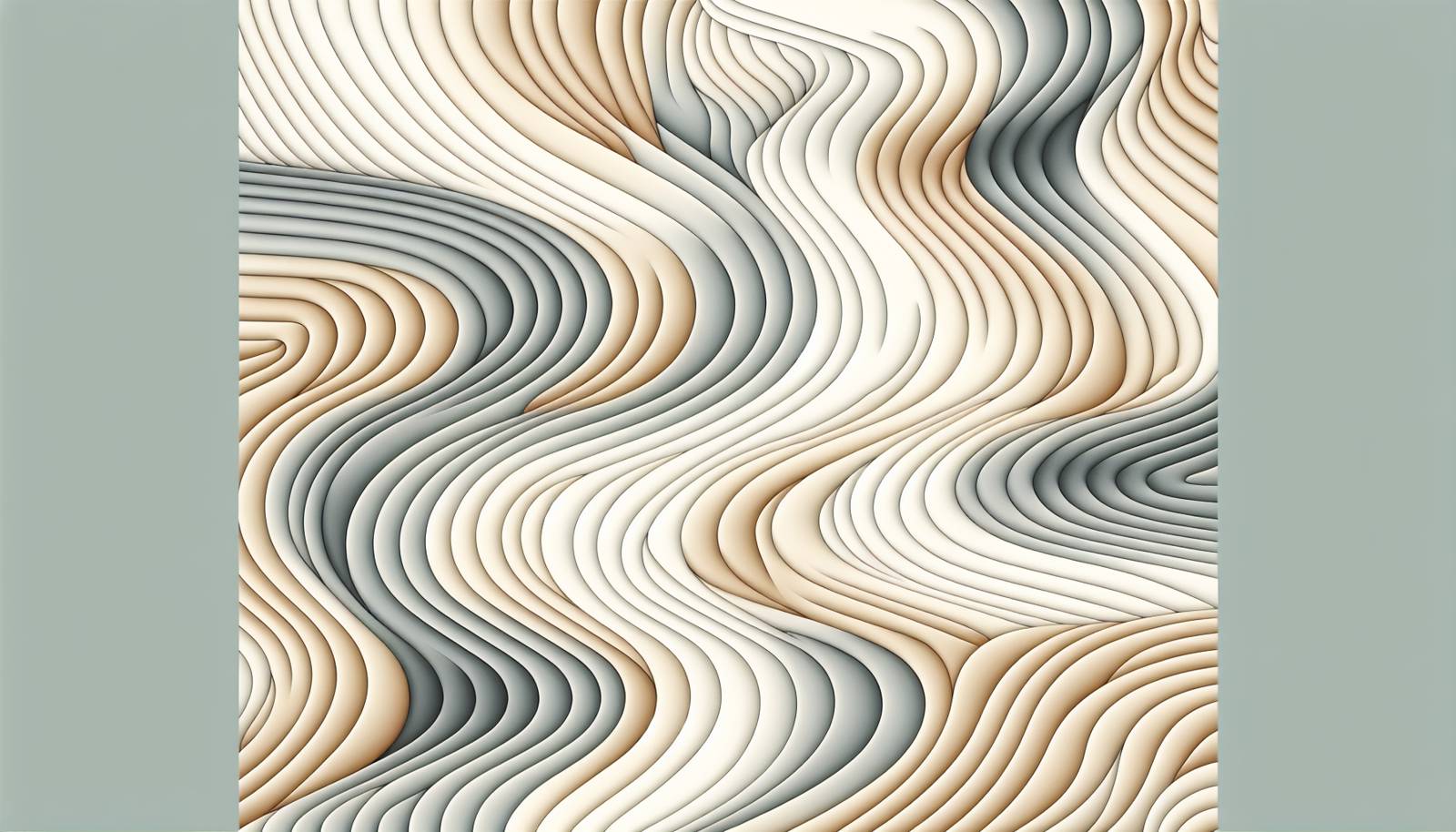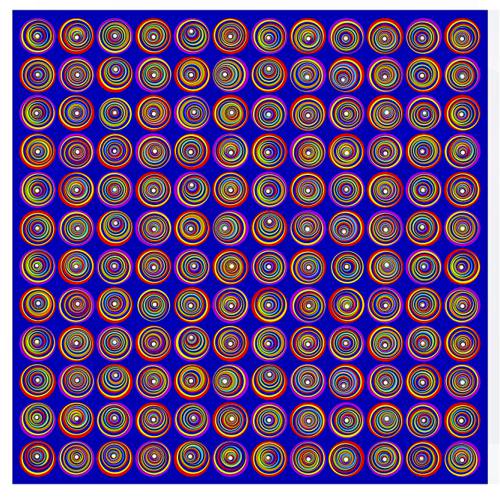
FAQ About Cultural Impact of Optical Art on Advertising and Design

What is Optical Art?
Optical Art, or Op Art, is a style of visual art that uses optical illusions to create the impression of movement, flashing and vibrating patterns, or warping effects on the viewer. It emerged in the 1960s and often creates an impression of depth and three-dimensionality through meticulous geometric patterns.

How does Optical Art influence advertising?
Optical Art influences advertising by attracting attention through its dynamic patterns and illusions. Ads using Op Art often stand out due to their eye-catching designs, which help in capturing and retaining consumer attention. This increases the likelihood of a brand or product being remembered and can enhance brand identity through distinctive visuals.

Why is Optical Art popular in graphic design?
Optical Art is popular in graphic design because of its ability to provoke visual engagement and create memorable designs. Its use of geometry, contrast, and illusion makes it ideal for creating distinctive and impactful visuals that capture the viewer's attention, aligning well with the goals of branding and marketing materials.

What are some examples of Optical Art in branding?
Examples of Optical Art in branding include the use of patterns and illusions in logos, packaging, and promotional materials that manipulate shape and perspective. Many brands incorporate elements of Op Art to create a sense of movement or depth, making their products more visually appealing and distinctive.

How does Optical Art affect consumer perception?
Optical Art affects consumer perception by enhancing visual interest and engagement. The illusions created by Op Art can evoke emotional responses and create memorable experiences, which can positively influence how consumers perceive a brand or product, often associating them with innovation and creativity.

In what ways does Optical Art improve advertising outcomes?
Optical Art improves advertising outcomes by increasing engagement and memorability. Its distinctive patterns can captivate viewers, making ads more intriguing and likely to leave a lasting impression. This can lead to higher brand recall and recognition, which are key goals in advertising campaigns.

How is Optical Art integrated into modern design software?
Optical Art is integrated into modern design software through digital tools that allow designers to create complex patterns and illusions with ease. Software like Adobe Illustrator and Photoshop offers features to manipulate geometry, color, and perspective, enabling the creation of Op Art-inspired designs efficiently.

What techniques in Optical Art are most used in advertising?
Common techniques from Optical Art used in advertising include the use of high contrast colors, repetitive patterns, geometrical shapes, and perspective illusions. These techniques are employed to grab attention and create a dynamic visual effect that encourages viewers to interact with the content.

Can Optical Art negatively affect brand perception?
While Optical Art can enhance brand perception by making it stand out, there is a potential risk of overwhelming or distracting consumers if overused. The key to effective use is balance; subtle applications can enhance a brand's visual appeal without compromising the clarity and message.

Are there any famous advertising campaigns that utilized Optical Art?
Yes, several advertising campaigns have famously utilized Optical Art to capture audience attention. For instance, brands like Pepsi and Nike have launched campaigns that feature Op Art-inspired designs to create visually compelling imagery that emphasizes movement and vibrancy.

What is the historical context behind the use of Optical Art in design?
Optical Art emerged in the 1960s as part of a broader movement towards modernism and abstract art. It was influenced by advancements in psychology and visual perception studies, which explored how abstract shapes and patterns could influence the viewer's perception and emotions.

How does Optical Art contribute to a brand's visual identity?
Optical Art contributes to a brand's visual identity by providing a unique and memorable visual style. Its dynamic and abstract qualities can align with a brand's values of innovation, creativity, and modernity, thereby enhancing its appeal and differentiating it from competitors.

What role do colors play in Optical Art and advertising?
Colors play a crucial role in Optical Art and advertising by enhancing the visual impact of illusions. High contrast and vibrant color choices amplify the sense of movement and depth, making designs more engaging and striking, which is essential for capturing consumer attention in advertising.

Does Optical Art have any influence on web design?
Yes, Optical Art has influenced web design, where subtle illusions are used to enhance user engagement and create visually intriguing interfaces. Effective use of Op Art in web design can improve user experience by adding depth and dynamism, making navigation more interactive and enjoyable.

What challenges do designers face when using Optical Art?
Designers face challenges like ensuring the Optical Art doesn't overwhelm or confuse viewers. Balancing the impact of illusions with the overall aesthetic of the design is crucial. Too much complexity can detract from the message, while too little can fail to leverage the op-art's captivating potential.

How do cultural factors influence the use of Optical Art in advertising?
Cultural factors can influence the acceptance and interpretation of Optical Art in advertising. Different cultures may perceive colors, shapes, and movement differently. Therefore, designers need to consider cultural contexts to ensure that their Op Art-inspired designs resonate well with the target demographic.

Can Optical Art enhance user experience in digital interfaces?
Optical Art can enhance user experience in digital interfaces by making them more engaging and visually appealing. Its use can create an immersive experience that encourages users to interact more deeply with the content, ultimately improving navigation and user satisfaction.

What technological advancements have aided the use of Optical Art in design?
Technological advancements such as sophisticated graphic design software, 3D modeling tools, and augmented reality have significantly aided the use of Optical Art in design. These technologies facilitate the creation of intricate patterns and illusions that are core to Op Art, enabling designers to push creative boundaries.

Is Optical Art used in packaging design?
Yes, Optical Art is often used in packaging design to create visually striking and memorable products. Its dynamic patterns can help packaging stand out on shelves, attract consumer attention, and convey certain brand characteristics like innovation and creativity.

How do businesses measure the effectiveness of Optical Art in their advertising?
Businesses measure the effectiveness of Optical Art in advertising through metrics like engagement rates, brand recall, and conversion rates. Surveys and consumer feedback can also provide insights into how well the Op Art elements resonate with the audience and contribute to achieving marketing goals.
